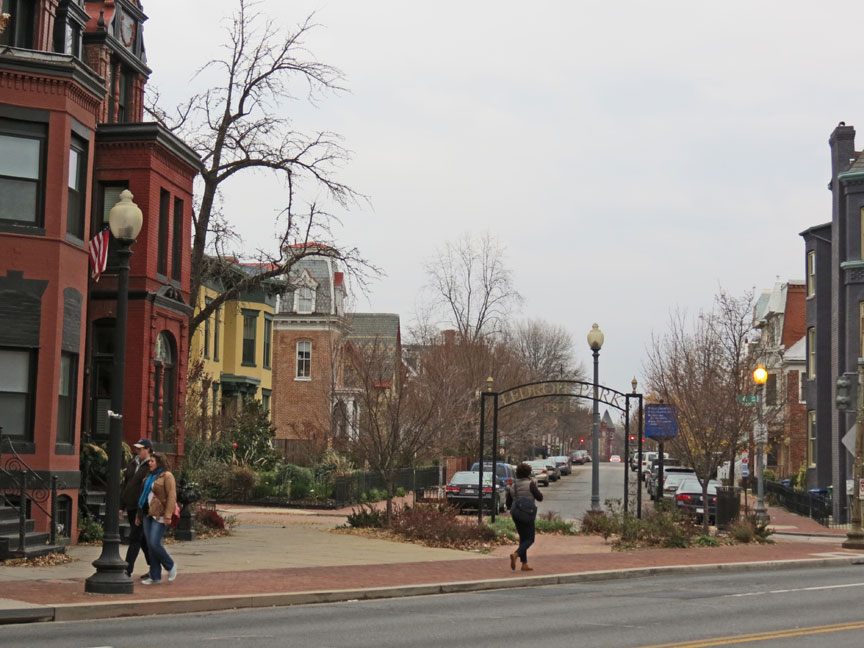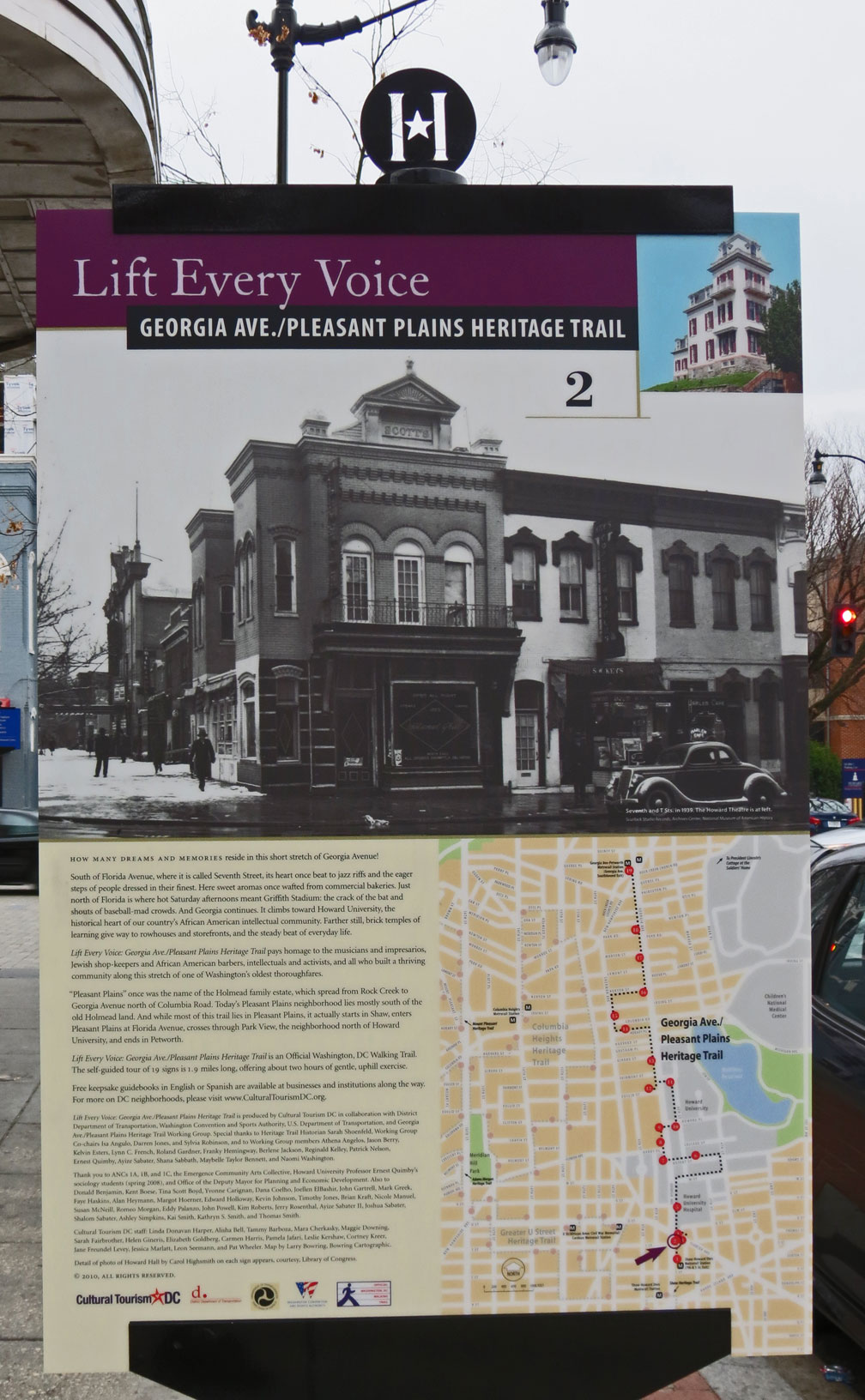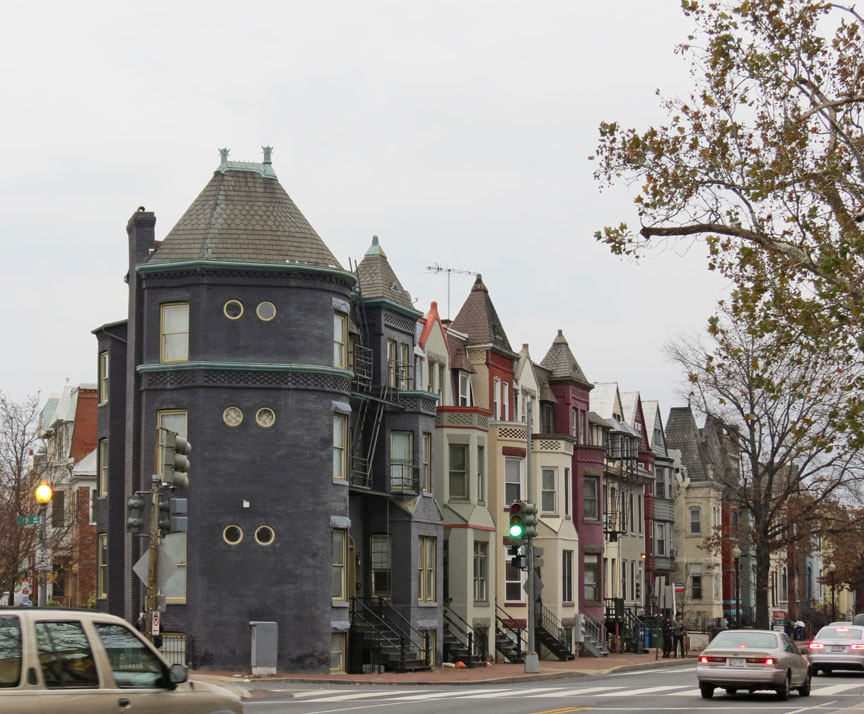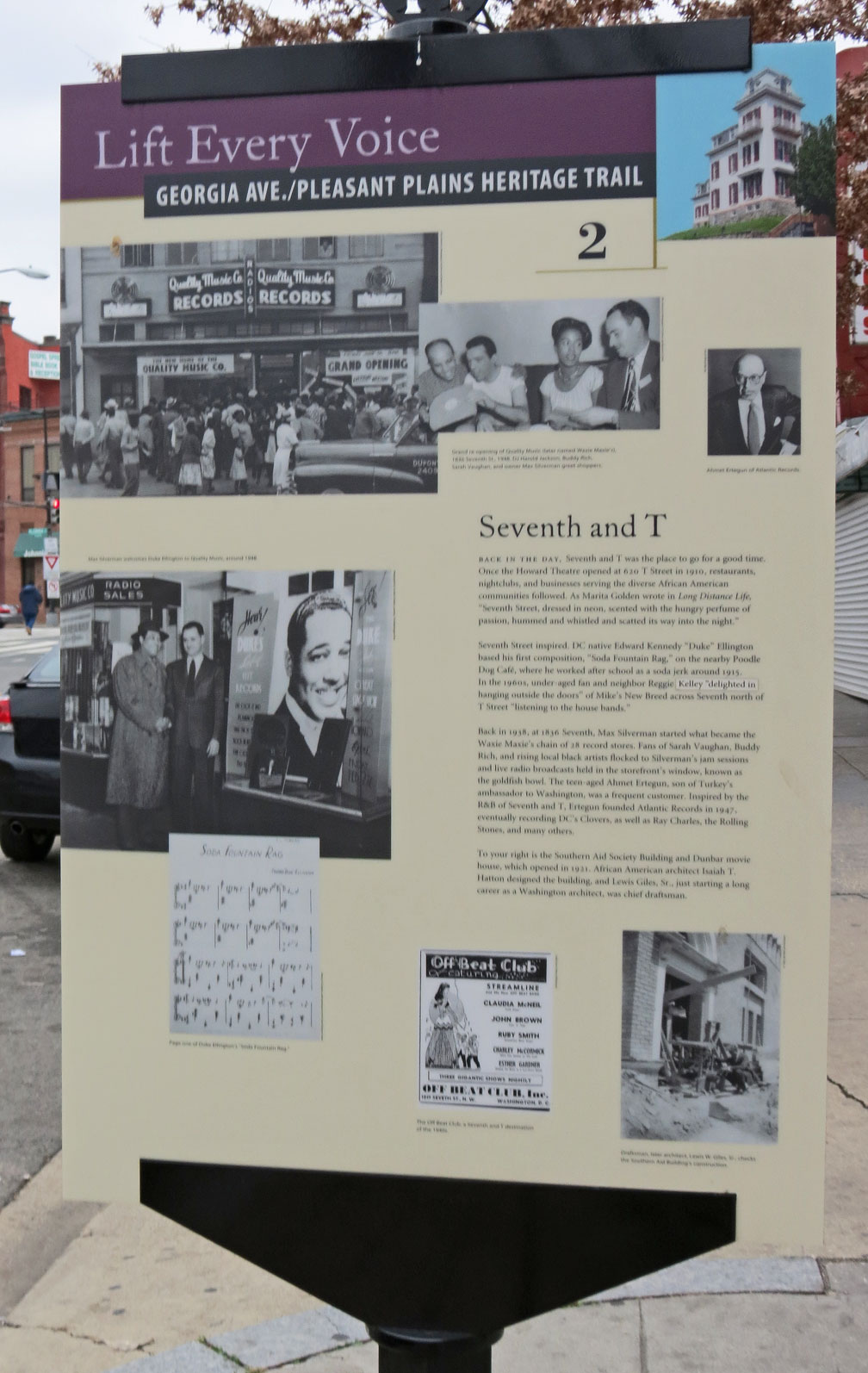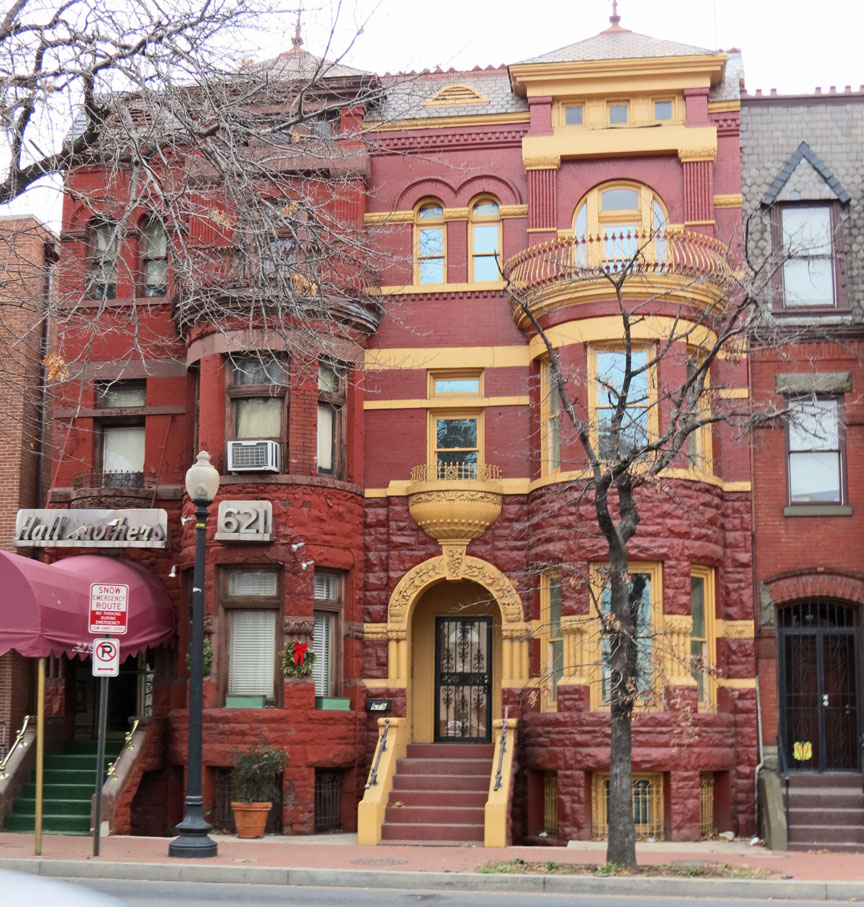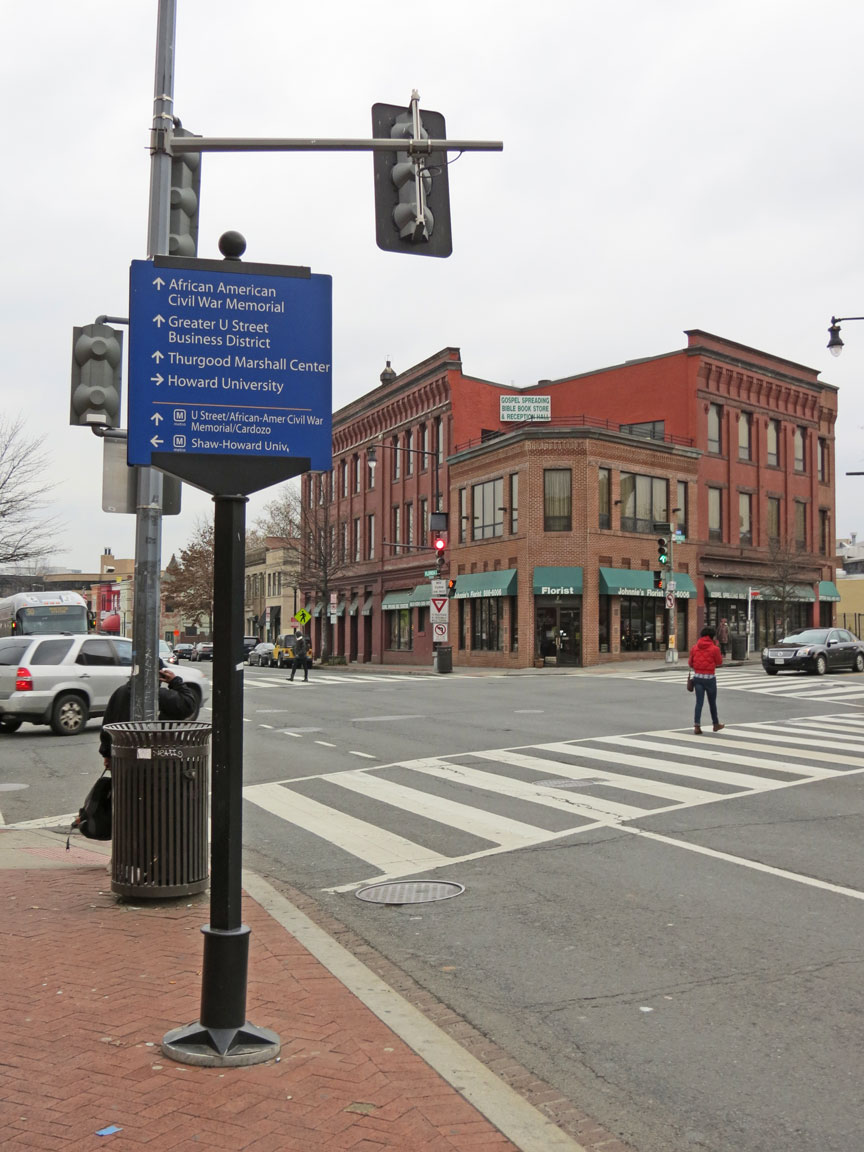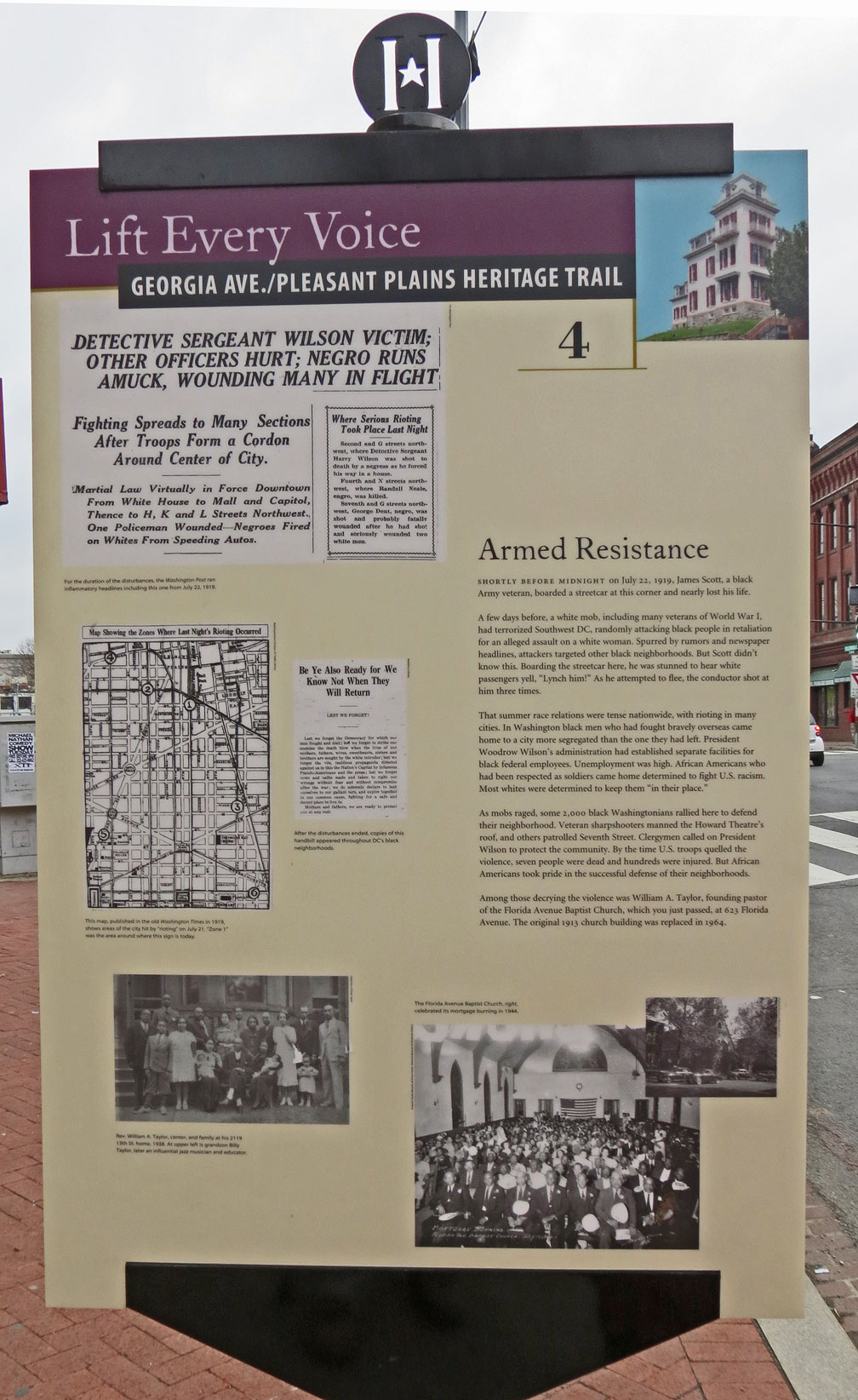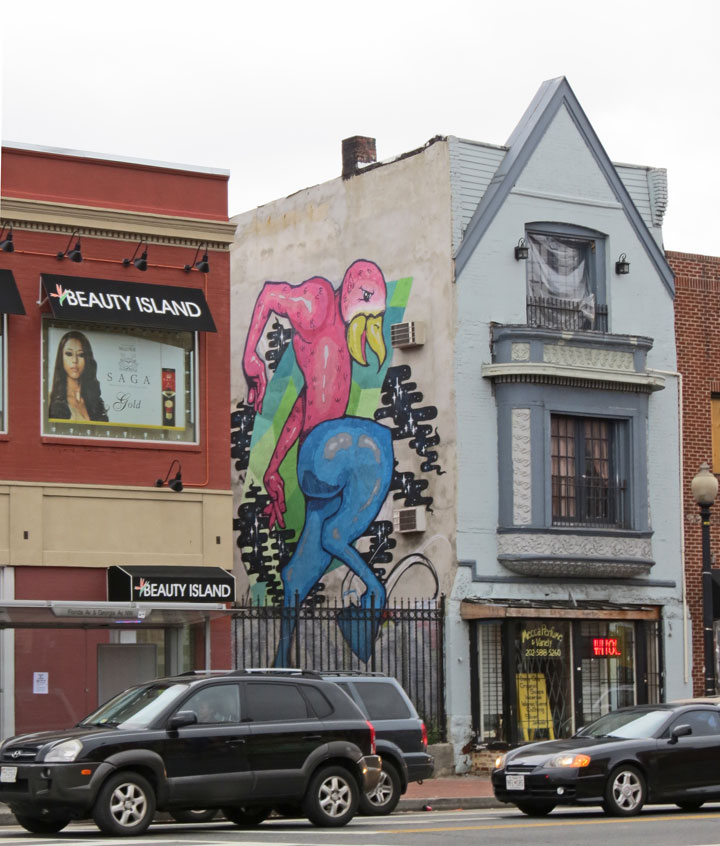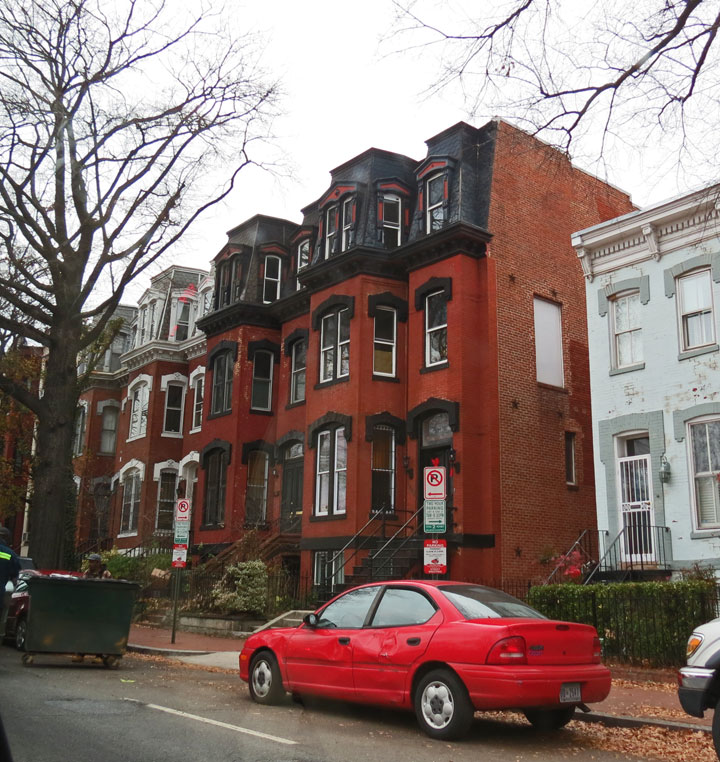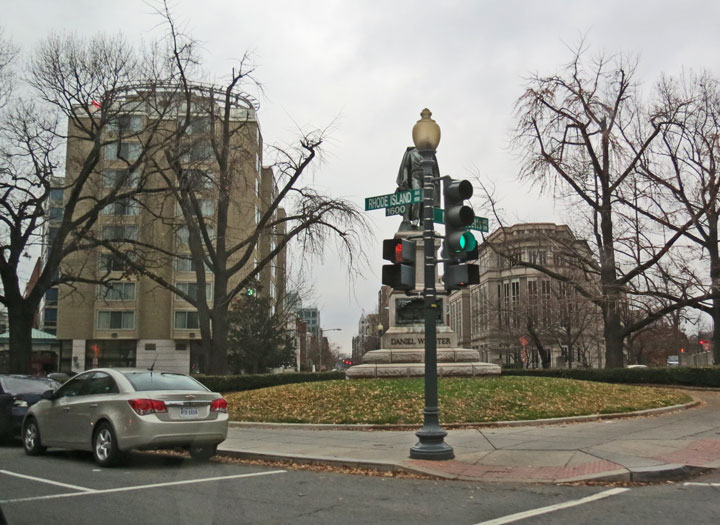

Howard Theatre
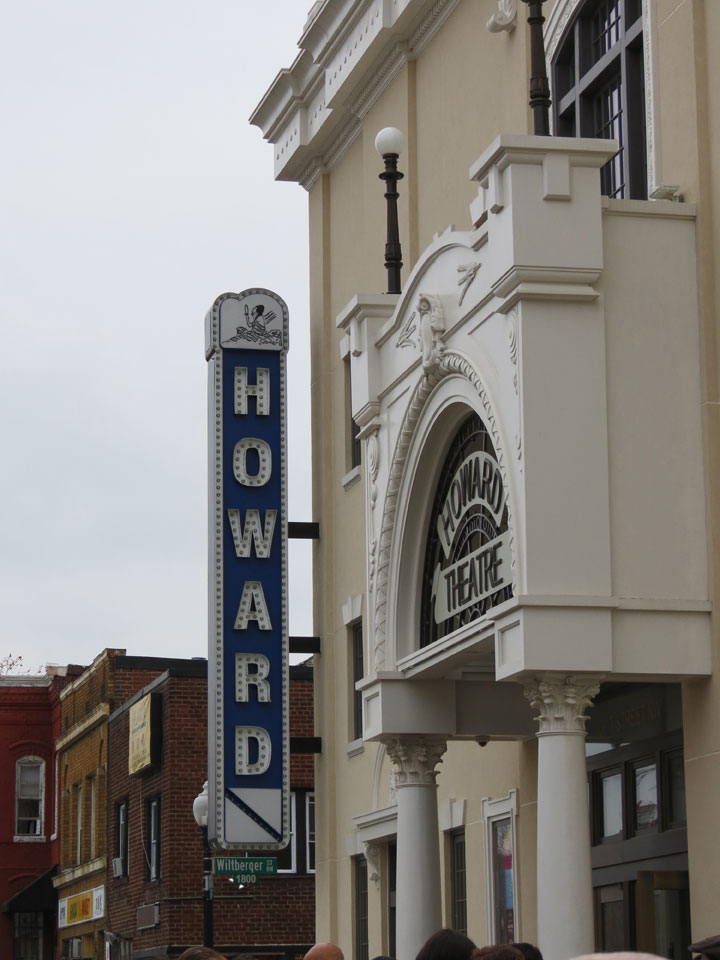
Howard Theatre
The Howard Theatre is a historic theatre, located at 620 T Street, Northwest, Washington, D.C.. Opened in 1910, it was added to the National Register of Historic Places in 1974.
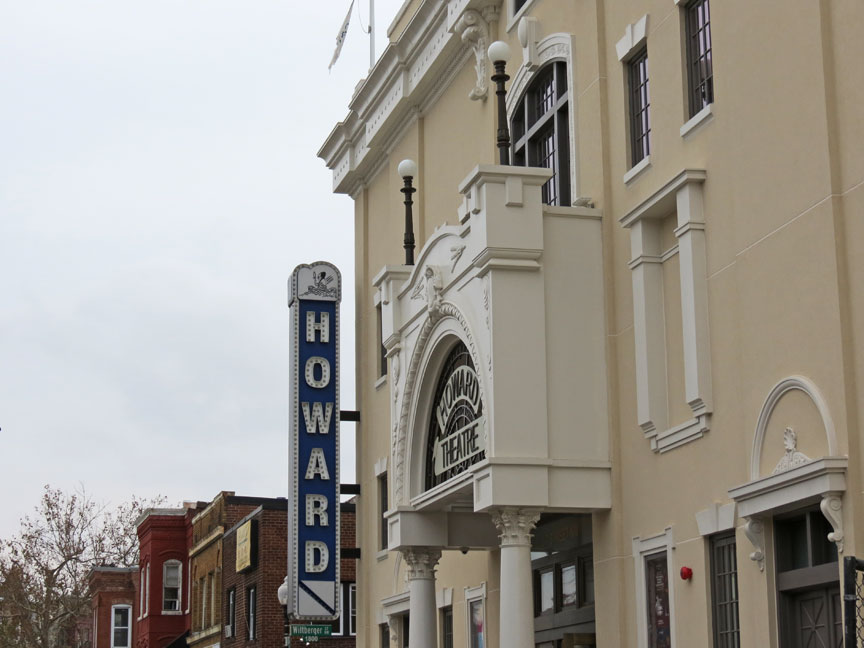
In its heyday, the theatre was known for catering to an African-American
clientele, and played host to many of the great black musical artists of the
early and mid-twentieth century. The Howard was billed as the "Theater of the
People", and supported two theatrical organizations, the Lafayette Players and
the Howard University Players. In September 2010 extensive renovations were
started to restore the theatre to its former glory. The theatre reopened on
April 9, 2012 to headline acts like Wanda Sykes, Blue Oyster Cult, and Chaka
Khan, all appearing in the first month since reopening.
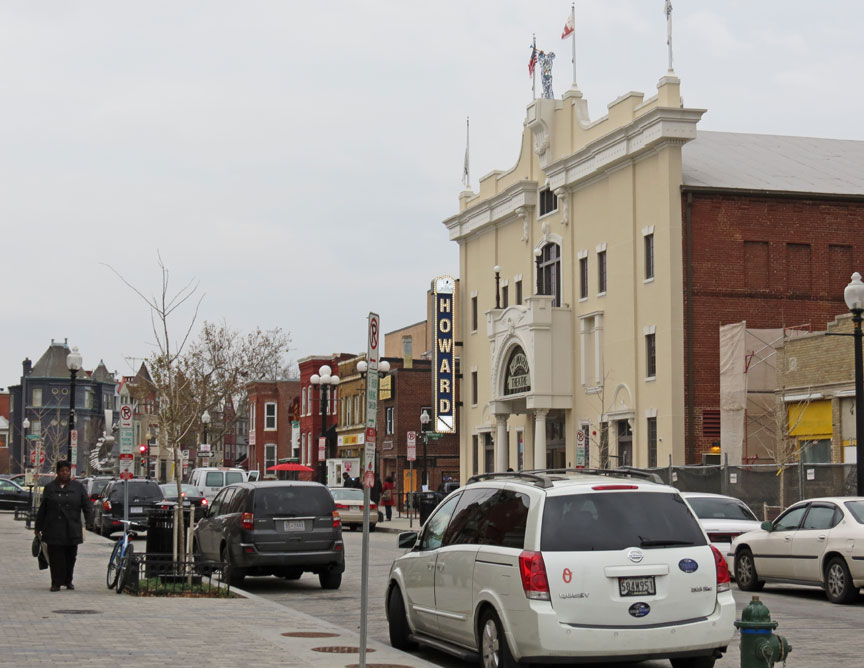
The theatre was founded and owned by the National Amusement Company, a
white-owned group. When built, it had a capacity of more than 1,200. Designed by
J. Edward Storck, the theatre featured orchestra and balcony seats and eight
proscenium boxes, with a lavishly decorated interior. No less extravagant was
the exterior, which combined elements of the Beaux-Arts, Italian Renaissance,
and neoclassical styles. The whole was surmounted by a larger than life statue
of Apollo playing his lyre.
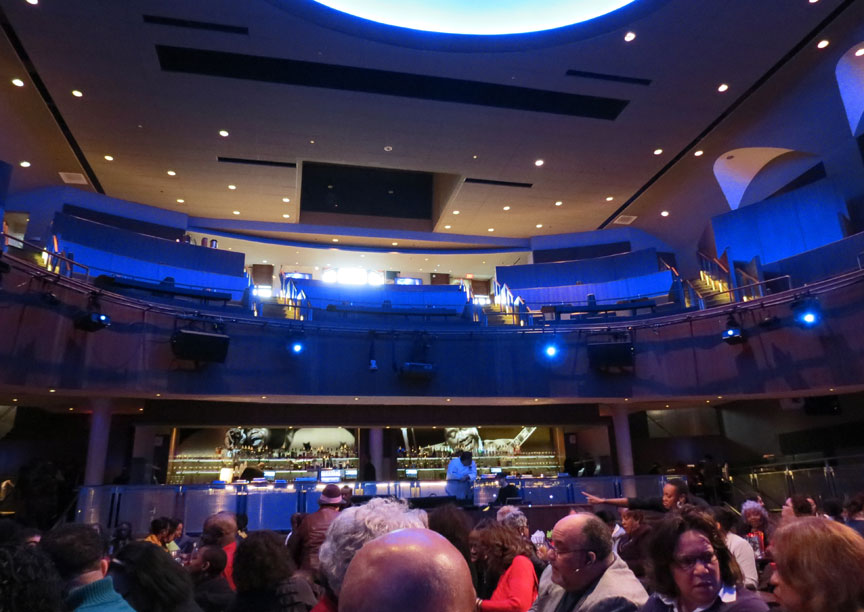
setup for a luncheon buffet
Andrew Thomas served as the theatre's manager during its early years. Beginning in 1922 it was leased and run by actor, producer, and entrepreneur Sherman Dudley. It was taken over in 1926 by Abe Lichtman, the white owner of a chain of movie theatres that were frequented by blacks. With the onset of the Great Depression, the building became a church for a time. In 1931, as part of the venue's return to its original purpose, Duke Ellington appeared with his band at the Howard, helping also to cement the theatre's reputation as an entertainment hotspot. This rebirth was helped along by Shep Allen, the building's new manager. In the 1930s Allen introduced an amateur contest that was used as a springboard to stardom by Billy Eckstine and Ella Fitzgerald.
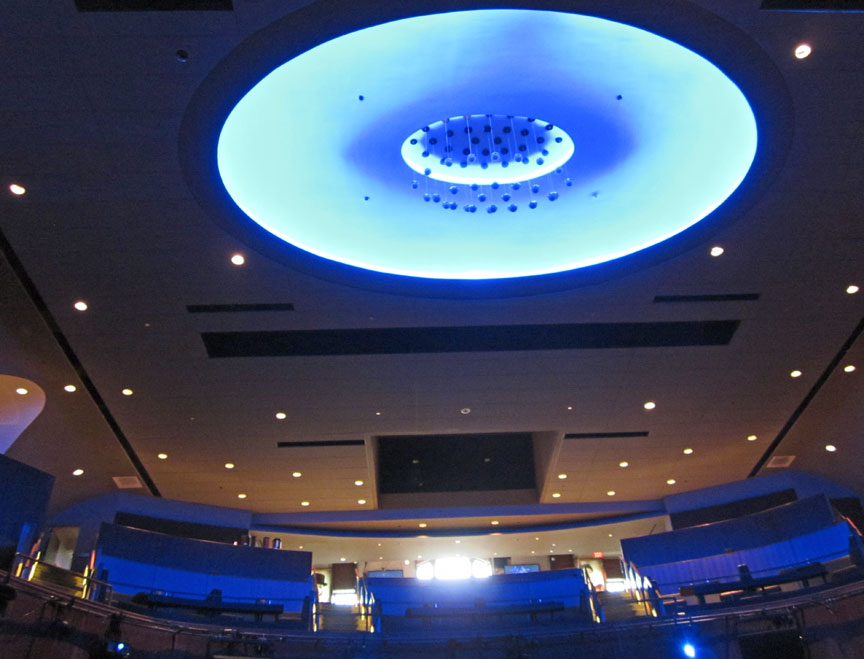
The Howard lost its original ornate facade in 1941 when it was redone in the
then-fashionable Streamline style. Franklin Delano Roosevelt and his wife
Eleanor would attend balls at the theatre during World War II. These balls
featured performers like Danny Kaye, Abbott and Costello and Cesar Romero, among
others. Also in the 1940s, Pearl Bailey made her debut at the Howard.
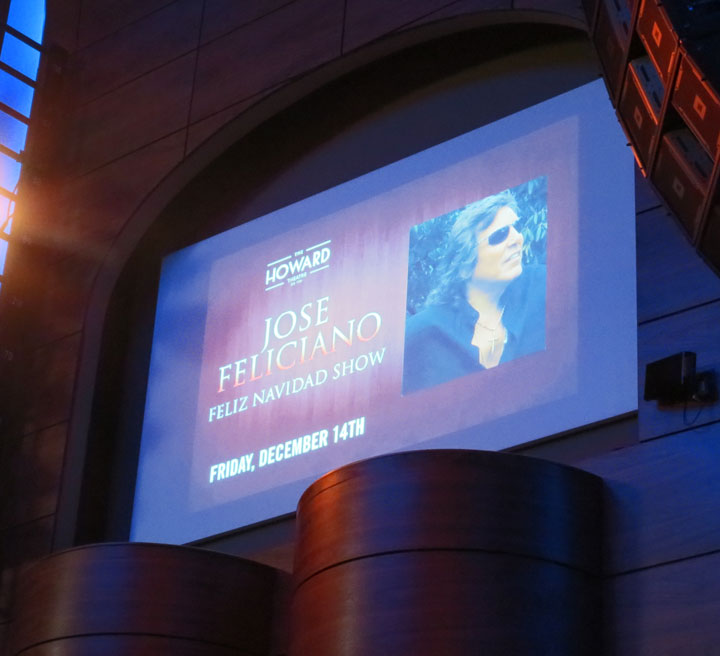
The Howard turned into a house for rock 'n' roll and rhythm and blues during the
1950s and 1960s, and many important acts from both genres played there. Among
the acts to grace the stage were Buddy Holly, Sarah Vaughn, Dinah Washington,
Sammy Davis, Jr., James Brown and The Famous Flames, Otis Redding, All Motown &
Stax Recording Stars, Lena Horne and Lionel Hampton.

The 1968 riots which followed the assassination of Martin Luther King, Jr.
caused the venue a great deal of harm. The riots, coupled with desegregation,
forced the theatre's closure in 1970. Three years later the Howard Theater
Foundation was organized to reopen the Howard. It was this organization which
succeeded, in 1974, in gaining the building a National Register nomination. In
1975, Redd Foxx and Melba Moore were among the acts featured at the theatre's
reopening. Later in the decade, numerous go-go bands played the venue. Chuck
Brown and the Soul Searchers also performed numerous times at the Howard
throughout the 1970s and 1980s. In 1980, the theatre closed again. At the time
it was the oldest venue in the country that featured black artists.
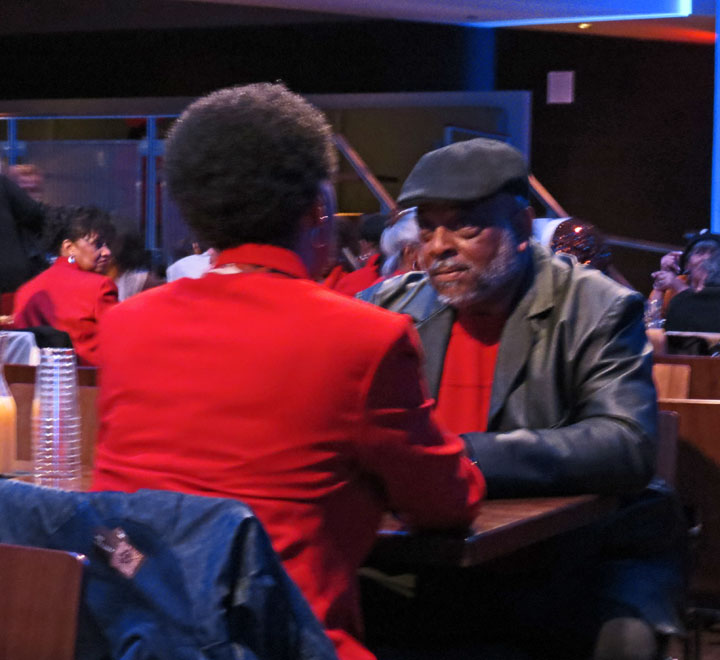
The DC Preservation League listed the Howard as one of its Most Endangered
Places in the city in 2002. In September 2010, groundbreaking for extensive
renovations of the theatre were held. The project's goals were to restore the
Howard Theatre to 600 seats, along with complimenting developments at the
adjacent Progression Place. Martinez + Johnson Architecture and Marshall Moya
Design are responsible for the restoration, architecture, and design of the
theatre.
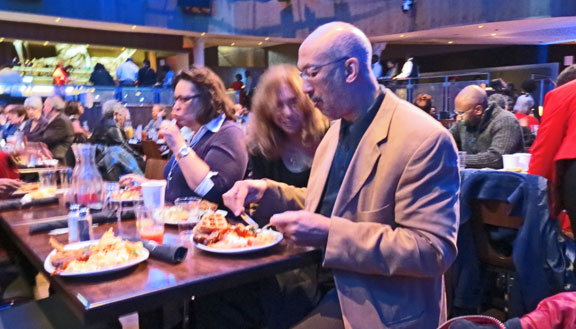
After a $29 million renovation, the theater reopened for Community Day on April
9, 2012.[4] The grand opening event was held on April 10.
Text from Wikipedia
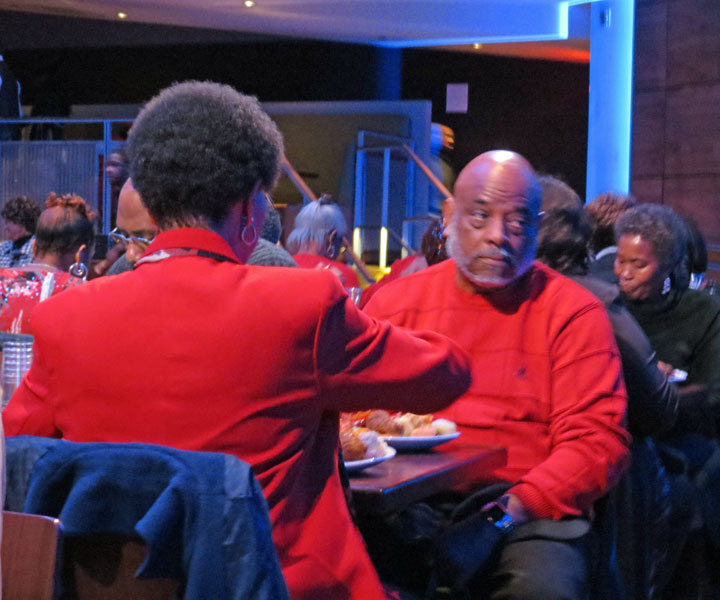
lunch guests
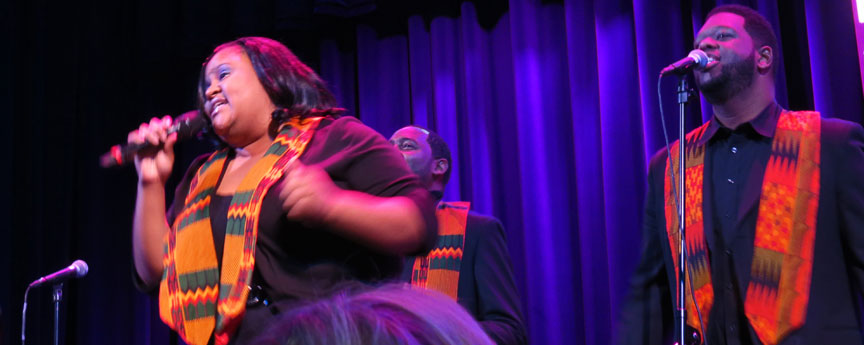
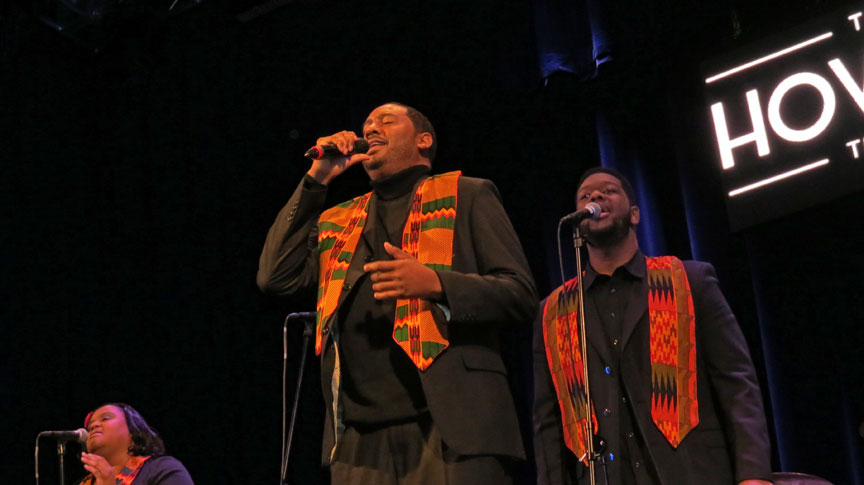
the show
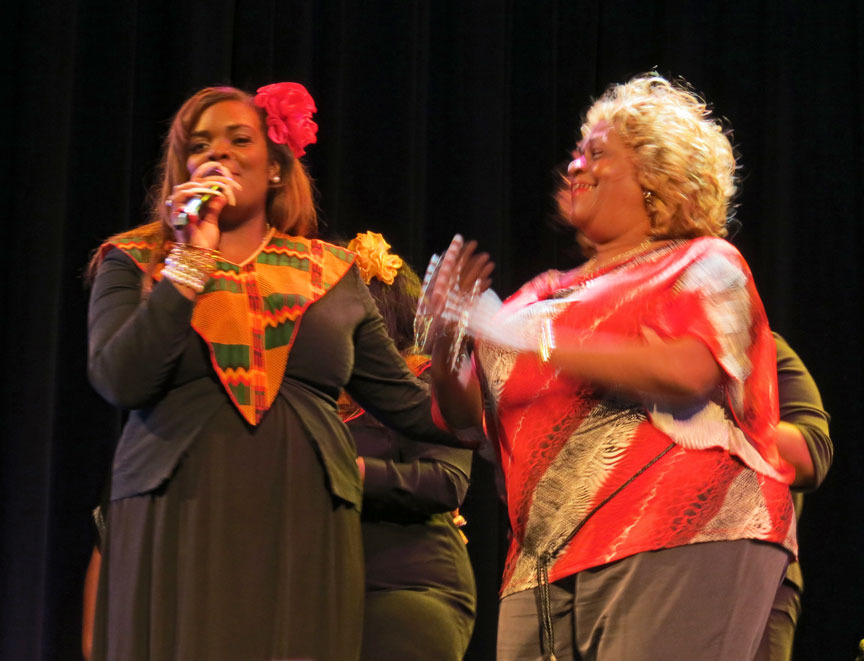
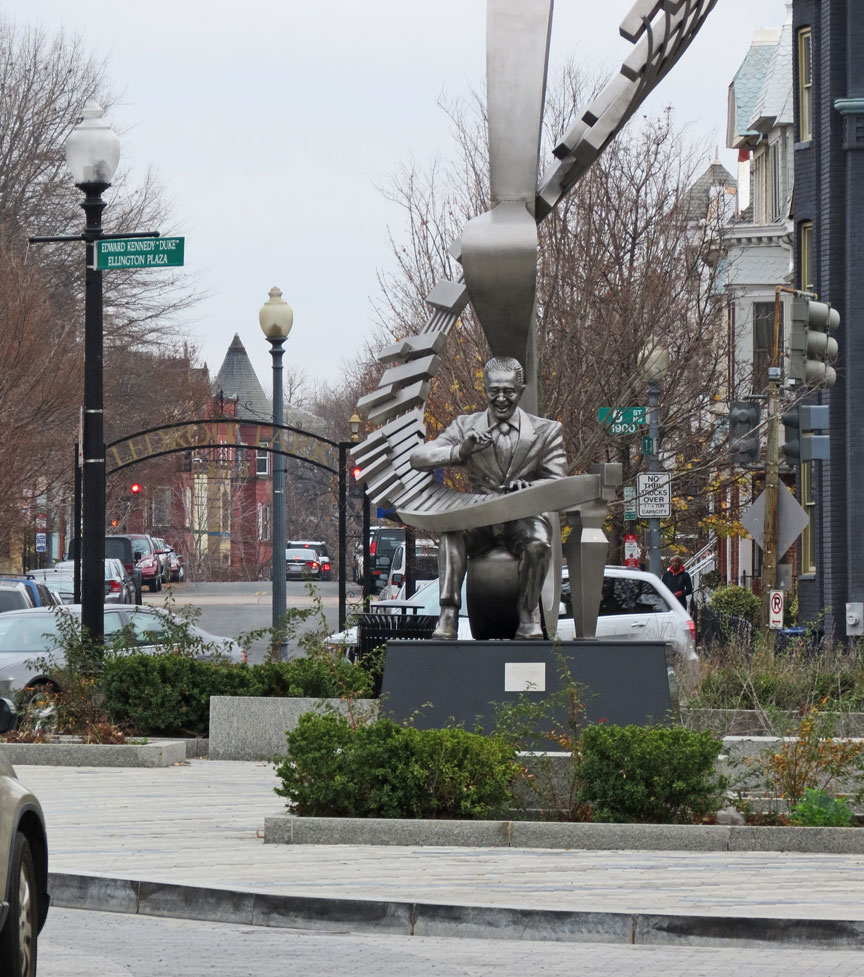
Duke Ellington

